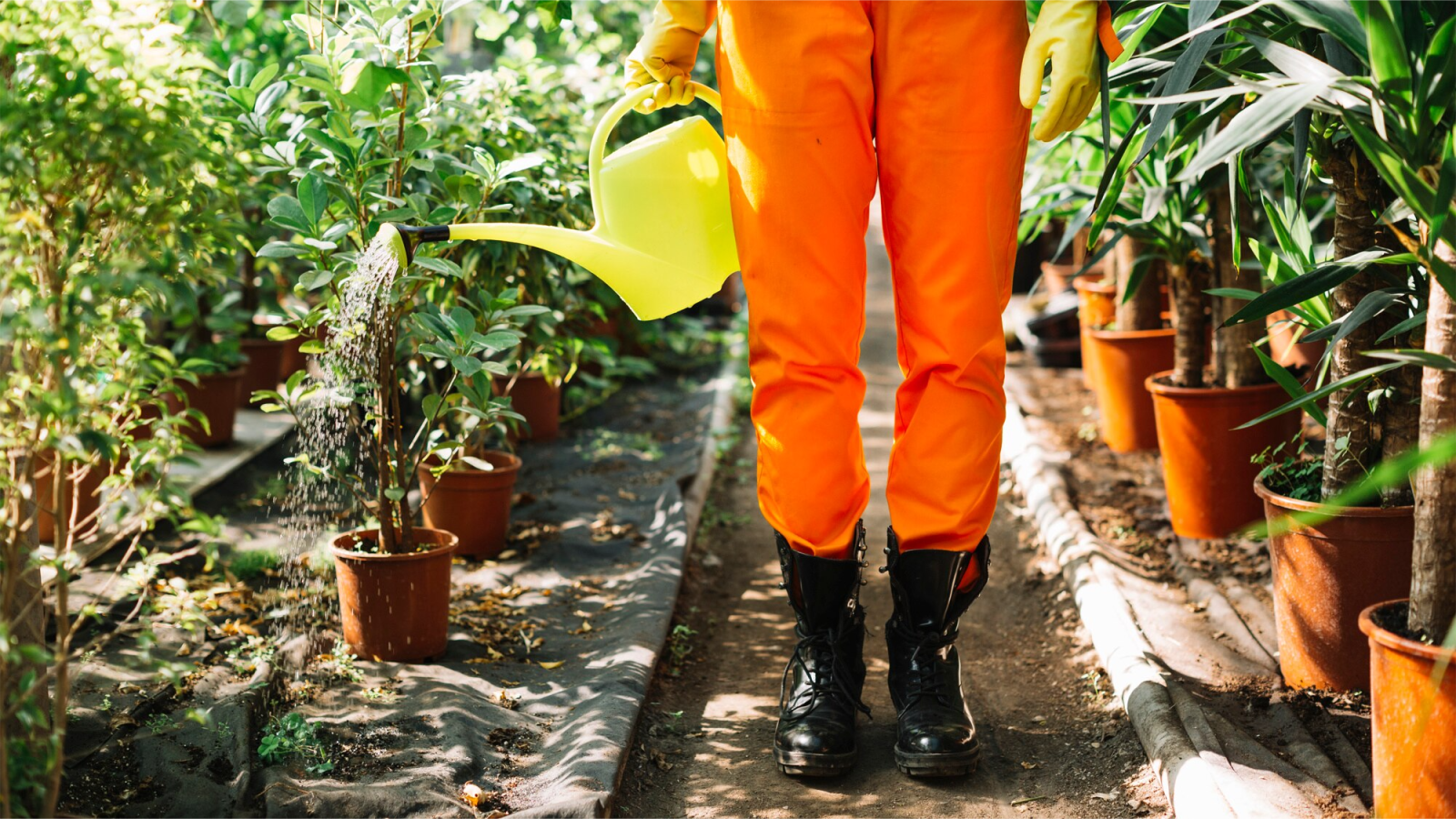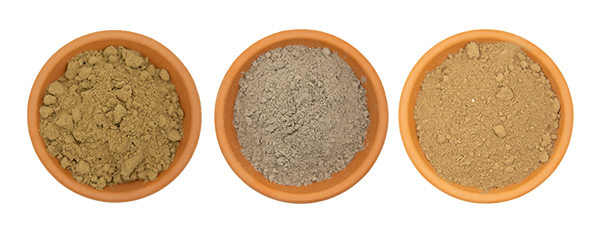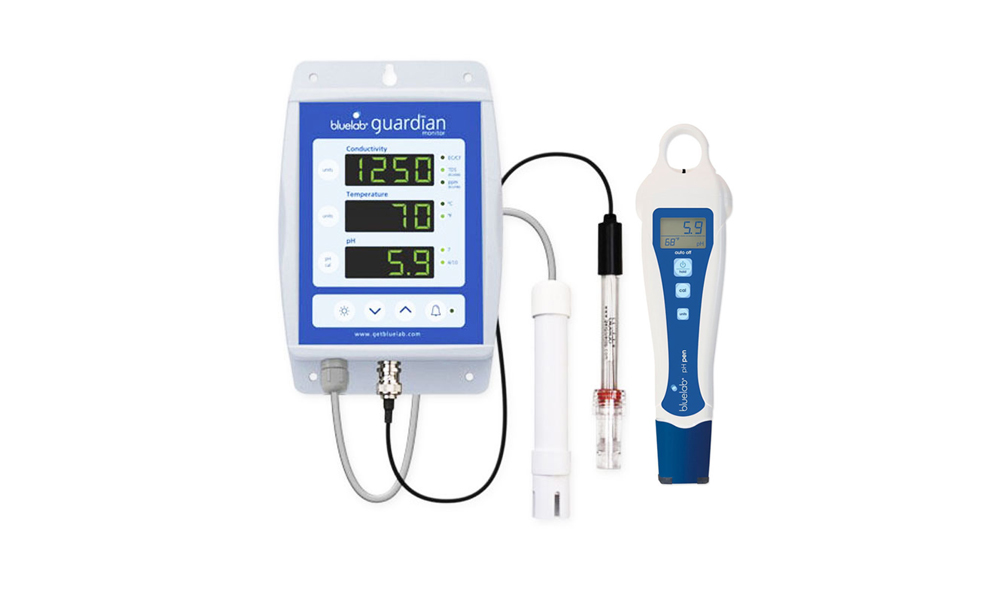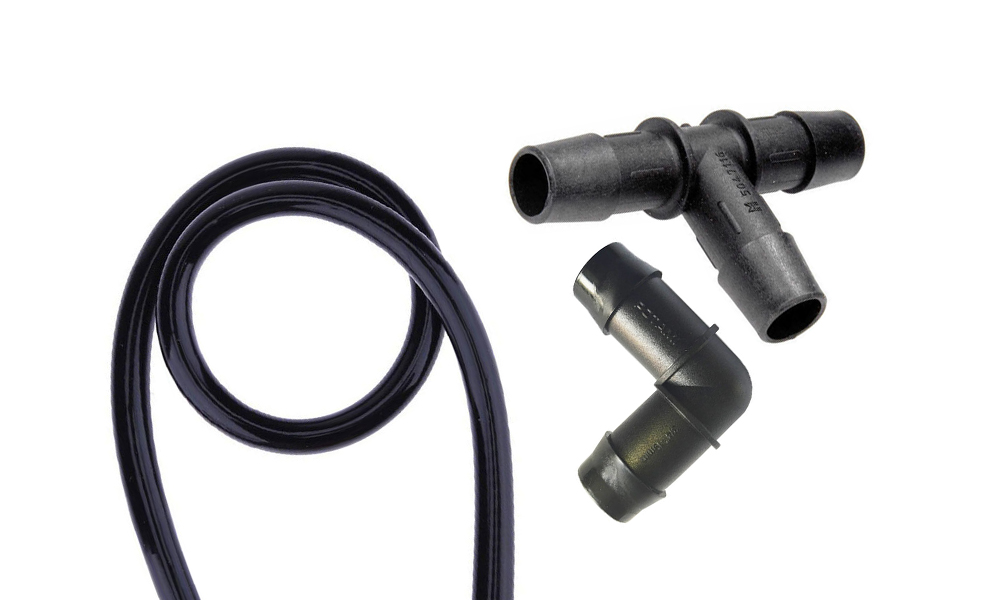10 Essential Watering Guidelines for Optimal Plant Growth in Australia
By Hydro Experts | 28 April 2025

Water is an essential element to your garden. Watering is typically the most poorly understood part of plant care in all climate zones of Australia, from up in the tropical north to cool south. Whether you have glorious potted indoor plants or the most beautiful outdoor gardens, if you learn how to water properly, you will see a huge improvement in your gardening outcomes.
As Australians, we recognise the value of water. From drought to flooding rains, we experience it all. Responsible watering is not only good for your plants, but at the same time, it is good for our environment.
Let's explore ten fundamental watering guidelines that will help your plants thrive while respecting our unique Australian conditions.
1. Water the Root Zone, Not the Foliage
Focus on the roots, not the leaves of the plant, when watering. This basic rule is true whether you are watering a delicate fern in the house or a sturdy eucalypt outside.
By watering close to the root zone, you are able to get moisture to the place where the plant actually takes up moisture. When watering, place the watering can or hose near the base of the plant and open up the watering position until you create a soak that penetrates deep into the soil. If watering a larger garden bed, consider drip irrigation, which will get the moisture more efficiently to the root zone.
Over-saturating leaf surfaces provides an ideal condition for fungal illness, which is particularly problematic in humid Australian environments. Water droplets on leaves become a series of magnifying glasses in direct sunlight and will scorch fine leaf tissues.
For indoor pots, avoid overhead watering but pour directly into the pot until the water is visible from the drainage hole. For garden beds, use a soaker hose or drip system.
2. Understand Your Soil's Water Retention Capabilities
There's a lot of variation in Australian soils - from water-repellent sandy soils near the coast to heavy clay soils in most of the suburbs. Knowing your specific soil type is important for efficient watering.
Sandy soils will drain quickly and will require more frequent irrigation with smaller amounts. Clay soils will hold moisture longer, but can be tricky to manage when you are trying to avoid waterlogging. A simple test to do is to take a handful of moist soil into your hand and squeeze it - your clay soil will form a sticky ball, whilst sandy soil will not hold together at all.
A long-term solution to incorrect watering is improving soil structure. Adding organic matter, such as compost, can increase water retention in sandy soils and improve drainage in clay soils. If your soils are particularly water repellent, you may wish to consider using one of the high-quality soil wetting agents available, particularly those specifically formulated for use under Australian conditions.
When selecting potting mix for pot plants, try to select quality potting mixes appropriate to the type of plant in the pot (for example, it is well known that succulents and natives prefer more free-draining mixes whilst tropicals would prefer more moisture-retentive mixes).
3. Water Deeply and Less Frequently
Frequent, shallow watering is one of the biggest novice gardening mistakes. This encourages the roots to grow close to the soil surface and places the plant at risk of experiencing heat stress and dry conditions, particularly during Australian summers.
Instead of shallow and frequent watering, water more deeply and less often. Watering deeply encourages the roots of the plant to grow down into the soil for moisture, creating stronger plants that are more drought resistant. Deep watering means watering until moisture has been absorbed into the soil to a depth of at least 15 – 20cm (garden beds).
For well-established gardens in the majority of Australia's regions, a deep soak once or twice per week in summer is so much better than a light sprinkling every day. In winter, you might even stretch that out to once every two weeks or longer, depending on rainfall and temperature.
When it comes to potted plants, water them until excess water comes out of the bottom, then let the top few centimeters dry before watering again. This creates the wet-dry cycle these plants prefer.
4. Time Your Watering Strategically
In Australia's sometimes severe climate, when you water, it can be just as important as watering your plants. Early morning is typically the best time, and between 5-9 am would be ideal. This allows plants to take advantage of that moisture when it is hot during the day, and by watering during the day, the foliage has some time to dry before evening to avoid disease issues.
Watering in the evening, although often convenient, can create issues with fungal problems since the plant will stay wet, and because some annuals can have a habit of dying off if they stay wet. If evening watering cannot be avoided, and you do so, ensure to keep the water off the foliage and just water the soil.
Avoid midday watering during hot periods – much of the water evaporates before reaching the roots, and sudden cooling can stress plants that are already coping with heat.
During winter in cooler Australian regions, midday watering can actually be beneficial, allowing moisture to penetrate before potentially freezing temperatures arrive overnight.
5. Observe Plant Signals, Not the Calendar
Rather than adhering to a rigid watering schedule, learn to read your plants' cues. Different species have varying water requirements, and these change with seasons, weather patterns, and growth stages.
Common signs of water stress include:
- Wilting or drooping leaves (though some plants, like hydrangeas, naturally wilt in strong sun)
- Curling or yellowing leaves
- Slow growth or failure to flower
- Dry, cracking soil pulling away from pot edges
For potted plants, the finger test remains reliable – insert your finger about 2-3cm into the soil. If it feels dry at that depth, it's time to water. For garden beds, a small trowel can help check soil moisture below the surface.
Remember that some Australian natives signal drought stress differently. Many have evolved to tolerate dry conditions and may not show obvious wilting. Look instead for dulling leaf colour or slight leaf curling.
6. Ensure Proper Drainage for All Plants
Regardless of species, appropriate drainage is important in plant health. More plants die from too much watering than from too little, and drainage is a big part of this consideration.
For container plants, always select pots that have drainage holes and use a quality potting mix. A layer of coarse material on the bottom of the pot, such as broken pottery shards, helps prevent drainage holes from becoming clogged.
In gardens with heavy clay or compacted soil, improve drainage by adding organic matter, making raised beds, or, in severe cases, even installing agricultural drains. If you are establishing new gardens, consider the natural drainage waters flowing across your property.
Planting those plants more suitable for drier conditions, for example, many of the Australian natives and Mediterranean plants, on slight mounds, will quickly ameliorate drainage around their root zones.
When growing indoor plants, you need to make sure to look at drainage, and always empty saucers after watering and not leave them standing in water, as this leads to root rot rapidly.
7. Consider Water Quality and Temperature
Chlorine, fluoride, and varying levels of minerals are often found in Australian tap water and may affect sensitive plants. Most plants can tolerate standard tap water, but plants with leaf burn or not growing well may prefer other water sources.
You should water your plants with harvested rainwater when possible, especially for acid-loving plants (gardenias, azaleas). For indoor plants that are sensitive to chemicals, it is best to let your tap water sit for 24 hours uncovered so the chlorine can dissipate.
Water temperature matters too – extremely cold water can shock plant roots, particularly for tropical species and indoor plants. Aim for water that's roughly at ambient temperature.
In hard water areas, consider occasional treatments with a soil acidifier for plants that prefer acidic conditions, as calcium buildup can gradually raise soil pH.
8. Adjust Watering to the Seasons
Australian seasons call for adaptable watering practices. Summer commonly necessitates more frequent watering, and winter usually calls for less watering. However, this varies significantly across our climate zones.
In tropical northern areas, the wet and dry seasons during the year will be a greater precedent for watering than the typical calendar seasons. During the monsoon period, ensure you have good drainage; during the dry season, keep note of what irrigating demands you may face.
In southern temperate zones, rainfall patterns may provide adequate moisture during winter and spring, requiring supplemental watering mainly in summer and autumn.
For container plants, be aware that pots can freeze in cold regions and overheat in summer. Position them accordingly and adjust watering to compensate for these extremes.
9. Implement Water Conservation Techniques
Water conservation remains essential across Australia. Implementing efficient watering practices not only benefits your garden but also our broader environment.
Consider these water-wise approaches:
- Apply organic mulch (sugar cane, wood chips, or straw) to reduce evaporation
- Install rainwater tanks to harvest roof runoff
- Group plants with similar water requirements together
- Incorporate drought-tolerant species, particularly Australian natives
- Choose appropriate pot sizes – oversized pots require more water
- Use moisture-retaining products like water crystals judiciously
Remember that established native plants often require little supplementary watering once their root systems develop. New plantings, however, need regular watering during their first year, even drought-tolerant species.
10. Invest in Appropriate Watering Tools
Having the right gear makes watering easier to do and will make watering more efficient. If you're at a stage where you are thinking about replacing your simple hoses, we recommend taking the plunge for equipment that makes watering your garden infinitely better.
Drip irrigation systems deliver water directly to plant roots with less waste and can run off a timer, meaning the plants are watered consistently. Soaker hoses work just as well for garden beds as they will seep the water into the soil, instead of spraying it into the air where it is easily lost or wasted.
For container gardens, consider self-watering pots or water reservoirs that provide consistent moisture, particularly valuable during heat waves. Water-wise trigger nozzles on hoses prevent wastage between plants.
For indoor plants, narrow-spouted watering cans allow precise application without splashing foliage or furniture.
Conclusion
Effectively watering your garden changes the way you get results, and is a way to be considerate of our limited water sources. Water less often, water deeply, engage with root zones, and take your cultivating, developing understanding of your growing plants and garden's needs, to create happy, accountable gardens.
Becoming proficient in watering takes time, observation and a considered approach; every garden is unique as it has its own microclimate, soils, and plant arrangements. With these ten guidelines that can be tweaked to your needs, you can intuitively feel your way into better engagement with watering.
Your plants will reward your efforts with vibrant growth, abundant flowering, and the quiet resilience that comes from proper care. Happy gardening!
FAQs
In summer, most garden plants benefit from a deep soak once or twice per week, depending on soil type and temperature. In winter, especially in cooler or temperate zones, watering can often be reduced to once every two weeks or less, as plants grow slower and evaporation is minimal.
Use the “finger test” or a small trowel. Dig a few centimetres below the surface—if the soil feels dry at about 5–10 cm depth, it’s time to water. For pots, check 2–3 cm below the surface. Avoid watering based on a fixed schedule alone.
Most Australian tap water is fine for general use, but sensitive plants (like peace lilies, calatheas, or gardenias) may respond poorly to high chlorine or mineral content. Where possible, use rainwater or let tap water sit uncovered for 24 hours to allow chlorine to dissipate.
Organic mulches like sugar cane, pea straw, or wood chips are excellent for reducing evaporation, insulating soil temperature, and slowly improving soil structure. Apply 5–7 cm of mulch and keep it slightly away from plant stems to avoid rot.
Yes, self-watering pots are highly effective, especially for busy gardeners or during hot spells. They maintain a consistent moisture level at the root zone and help prevent overwatering. Just ensure they’re emptied occasionally to prevent stagnant water buildup.





